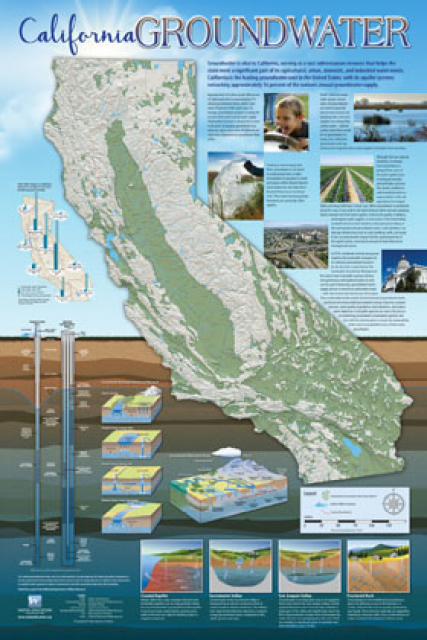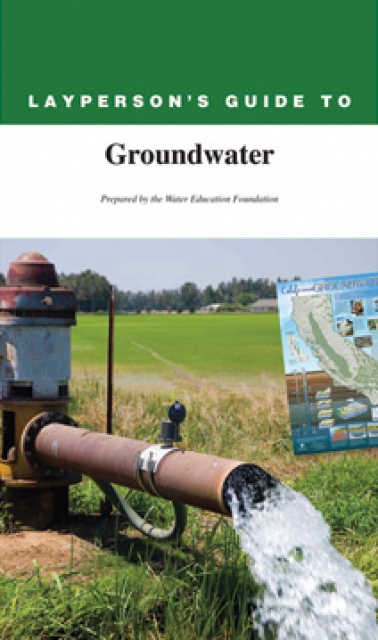Vexed by Salt And Nitrates In Central Valley Groundwater, Regulators Turn To Unusual Coalition For Solutions
WESTERN WATER SPOTLIGHT: Left unaddressed, salts and nitrates could render farmland unsuitable for crops and family well water undrinkable
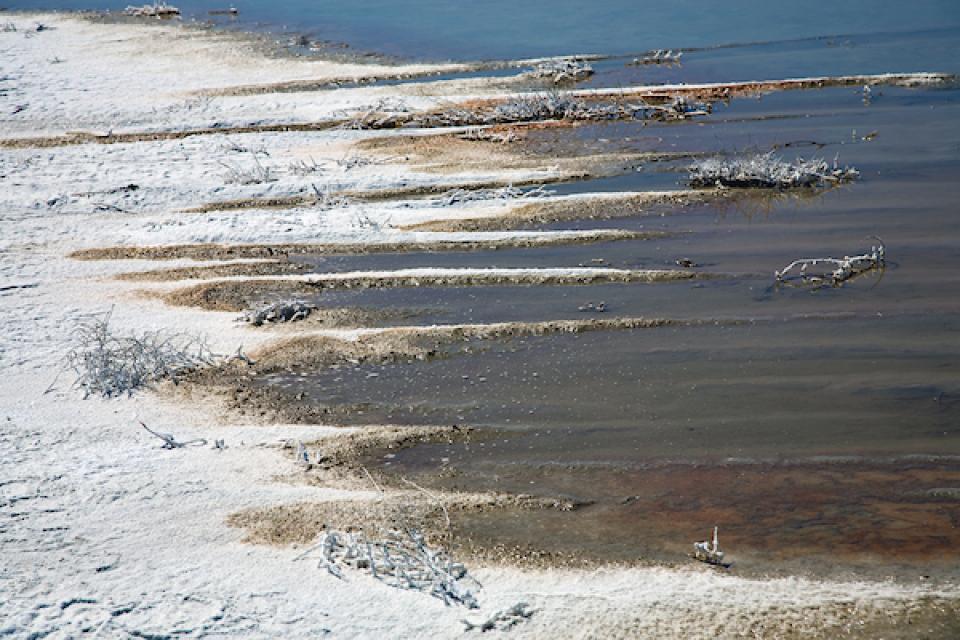 More than a decade in the making, an
ambitious plan to deal with the vexing problem of salt and
nitrates in the soils that seep into key groundwater basins of
the Central Valley is moving toward implementation. But its
authors are not who you might expect.
More than a decade in the making, an
ambitious plan to deal with the vexing problem of salt and
nitrates in the soils that seep into key groundwater basins of
the Central Valley is moving toward implementation. But its
authors are not who you might expect.
An unusual collaboration of agricultural interests, cities, water agencies and environmental justice advocates collaborated for years to find common ground to address a set of problems that have rendered family wells undrinkable and some soil virtually unusable for farming.
“It’s a better solution because it was developed by people from different areas of California and they could raise issues we might not have been considering if we were only looking in Kern County or Colusa County,” said Jeanne Chilcott, environmental program manager with the Central Valley Regional Water Quality Control Board.
“If not addressed, economic impacts of salts and nitrates on the Valley are estimated to exceed $3 billion per year.”
~Central Valley Salinity Alternatives for Long Term Sustainability.
The nitrate problem mainly stems from more than 50 years of spreading fertilizers on the nation’s most productive farmland; the salts come from simply irrigating any crops. Nitrates in drinking water can be harmful for human health, particularly for infants. Salts can stunt plant growth, encrust the dirt, and — in the Central Valley — squeeze the productive life out of some of the most fertile soils in the world. In the Middle East, centuries of irrigation in the floodplain of the Tigris and Euphrates rivers have left a thick crust of salt on the land and soil hardened by salt deposits, a result Central Valley farmers and others hope to avoid.
The regional water board approved the Central Valley Salt and Nitrate Control Program May 31 that calls for bottled water to be delivered to some affected communities as part of the development of nitrate management zones. The State Water Resources Control Board will vote on whether to approve the program next year. The program, a result of the Central Valley Salinity Alternatives for Long Term Sustainability (CV-SALTS), a deliberative process that seeks to stem nitrate discharges while acknowledging the longer-term challenge of cleaning up aquifers and returning them to productivity.
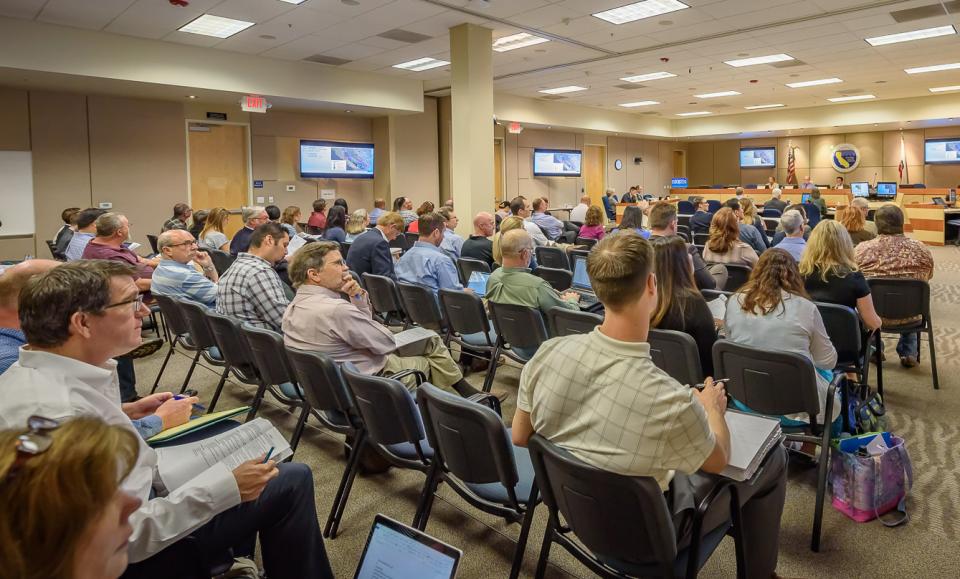 For years, growers, water providers,
regulators and others have recognized that something needs to be
done about the salt and nitrate in the soil and groundwater of
the Central Valley, particularly those areas where contamination
is so bad that it has hurt agricultural production and put the
safety of public water sources in jeopardy. In 2012, researchers
with the University of California, Davis reported that based on
continuing trends, 80 percent of the people in the Tulare Lake
Basin would be affected by nitrate-contaminated groundwater by
2050.
For years, growers, water providers,
regulators and others have recognized that something needs to be
done about the salt and nitrate in the soil and groundwater of
the Central Valley, particularly those areas where contamination
is so bad that it has hurt agricultural production and put the
safety of public water sources in jeopardy. In 2012, researchers
with the University of California, Davis reported that based on
continuing trends, 80 percent of the people in the Tulare Lake
Basin would be affected by nitrate-contaminated groundwater by
2050.
Addressing legacy contamination
The program’s path began in 2006 when state officials invited people to discuss salt accumulation in the valley and whether a solution could be fashioned as opposed to “watching the valley eventually become a desert,” Chilcott said.
“That regulatory framework as it was set up to deal with nitrates in groundwater did not work well for anyone. It didn’t fix the problem and it put agricultural and other industries that discharge nitrates to groundwater in a position that they couldn’t comply with the regulations.”
~Farmer David Cory, chairman of the stakeholder-led Central Valley salinity coalition.
People quickly recognized that a broad-based stakeholder perspective was needed and “not just one agency trying to frame a solution” to a problem that has existed for decades and has to be addressed even while discharges continue, Chilcott said.
“We are trying to deal with a situation where we have legacy contamination on a broad scale both for nitrate and salt,” she said.
Farmer David Cory, chairman of the stakeholder-led Central Valley Salinity Coalition, said something had to be done about the problems in a manner that didn’t put farmers out of business.
“That [existing] regulatory framework as it was set up to deal with nitrates in groundwater did not work well for anyone,” he said. “It didn’t fix the problem and it put agricultural and other industries that discharge nitrates to groundwater in a position that they couldn’t comply with the regulations.”
The program revises the regional water board’s two basin plans (Sacramento/San Joaquin and Tulare Lake) that cover the Central Valley and set the water quality rules that are implemented through permits, known as waste discharge requirements, that dischargers must follow. Actions taken depend on the specifics of each field, though Cory noted that “the first step is to increase nitrogen-use efficiency” through correct application rate, timing and source of fertilizer.
Cory, who grows cotton, alfalfa, wheat and rice on about 2,000 acres in the Los Banos area, said shutting down farming operations to stanch nitrate discharges “wasn’t going to help the drinking water problem and certainly was not going to help the small towns and the folks affected by nitrate.” That, he said, was “a lose-lose situation.”
Cory said the program is the result of more than 10 years of extensive consultation and negotiation. “By sitting in a room together at least one day a month for many, many years, we really got to understand each other’s issues and tried to come up with a way that we could solve this problem, and all coexist,” he said.
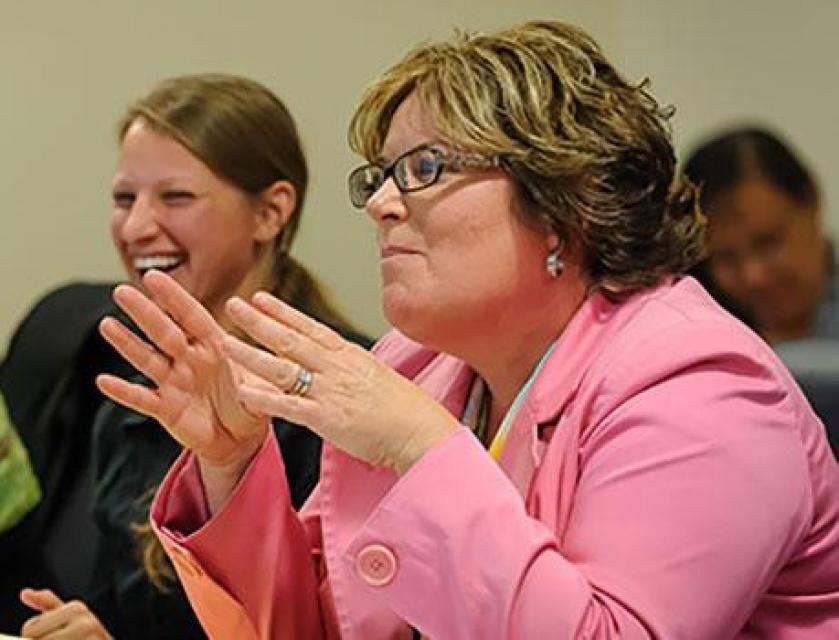 Tess Dunham, one of the chief
architects of the program, said the approach was the result of a
broad stakeholder process that sought a bottom-up means of
dealing with the problem.
Tess Dunham, one of the chief
architects of the program, said the approach was the result of a
broad stakeholder process that sought a bottom-up means of
dealing with the problem.
“[Former regional board Executive Director] Pamela Creedon in her tenure basically directed the stakeholders that either you all can come together and help put together the salt and nitrate management plan or we are going into the regional board offices and write it ourselves and you may not like what comes out at the other end,” said Dunham, an attorney with Somach Simmons & Dunn in Sacramento.
‘Do no more harm’
The program emphasizes the ability of local and regional groups to develop site-specific management plans that first provide safe drinking water and then implement cost-effective measures to balance salt or nitrate loadings and begin restoring groundwater. Its primary focus for the first 10 years is to reduce the level of nitrates affecting groundwater supplies used for drinking water and provide safe drinking water for users currently affected, such as the hardest-hit high-priority parts of the Central Valley: the Kaweah, Turlock, Chowchilla, Tule, Modesto and Kings groundwater basins and subbasins.
“There are basically three goals,” said Daniel Cozad, executive director of the coalition. “The first is to provide safe drinking water. The second is what we call ‘reaching balance’ … essentially a ‘do no more harm’ kind of a thought, and then ultimately, where possible and feasible, remediate the basin back to where it meets all of the water quality goals.”
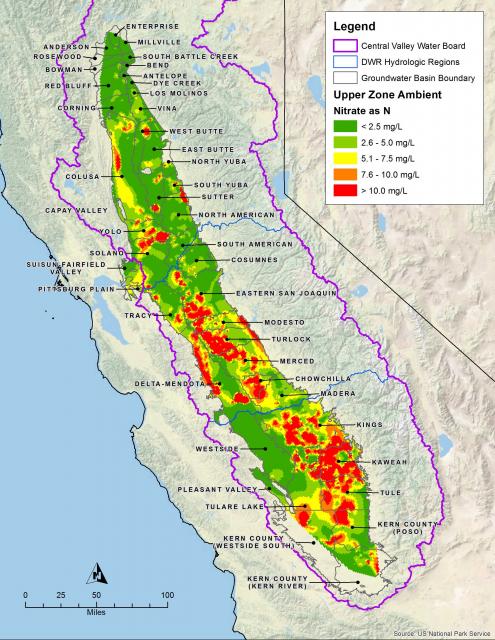 Chilcott, with the regional water
board, said the program aims to “empower localized solutions”
that work best for groundwater users, especially those with
impacted drinking water supplies.
Chilcott, with the regional water
board, said the program aims to “empower localized solutions”
that work best for groundwater users, especially those with
impacted drinking water supplies.
“Obviously, short-term, what we anticipate is initially probably buying bottled water, but we want that to expand and, in some areas, it means doing wellhead treatment,” she said.
Advocates for disadvantaged communities affected by nitrate-contaminated wells laud the program’s goals of providing drinking water, achieving a salt/nitrate balance and aquifer restoration. Although they were part of the coalition, they believe a more aggressive approach is warranted.
“Unfortunately, only the provision of drinking water is actually required with the clear standards of oversight by the regional water board, whereas the goals of balance and restoration are only required where ‘reasonable, feasible and practical,’” said Debi Ores, Sacramento staff attorney with the Community Water Center, a nonprofit environmental justice advocacy group based in the Tulare County city of Visalia that was a coalition participant.
Community Water Center would like to see the program returned to the regional board to correct what its advocates say are deficiencies and to strengthen the focus on returning affected areas back to health.
Tackling such a major problem as salt and nitrate required a staged, incremental approach, Cozad said.
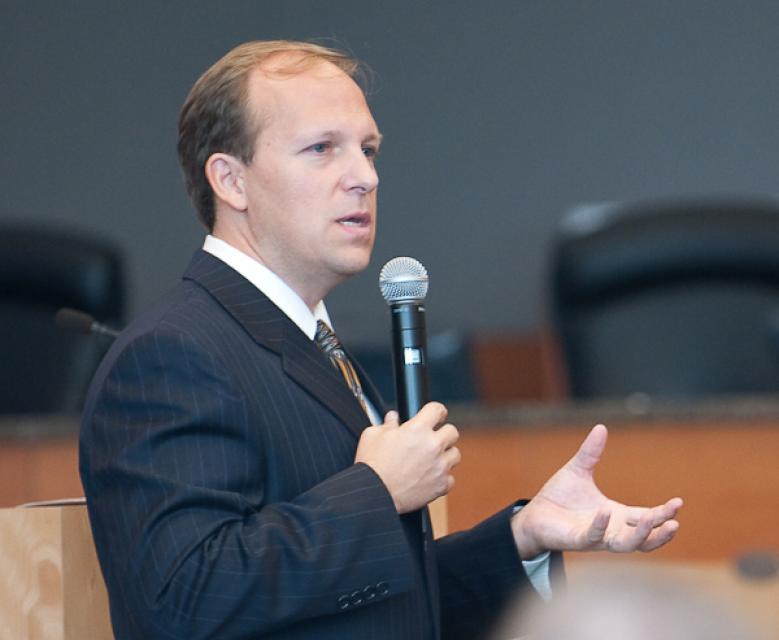 “It’s a comprehensive, long-term
plan,” he said. “It doesn’t change the world in a minute. It
doesn’t even promise to do that. What it does is to lay out for
two constituents — salinity and nitrate — a path to compliance
for people who discharge as well as for improving groundwater
quality.”
“It’s a comprehensive, long-term
plan,” he said. “It doesn’t change the world in a minute. It
doesn’t even promise to do that. What it does is to lay out for
two constituents — salinity and nitrate — a path to compliance
for people who discharge as well as for improving groundwater
quality.”
Cozad said the idea is to give people more time and flexibility to achieve nitrate compliance subject to the oversight of the Central Valley regional water board.
“It is a trade-off,” he said. “We can’t regulate ourselves into getting clean water for people. No matter what you do today, it will still take 20 to 50 years in many cases to get clean water and that’s not a solution anyone would say solves anything.”
Getting people clean water
Nicole Gleason, a Sacramento attorney representing agricultural interests in the development of the program, said the program essentially recognizes that it’s not technically feasible for dischargers to reduce their concentrations to the amounts regulators believe are necessary to meet water quality standards.
“For the very first time, we are just going to focus on finding all the people that are drinking dirty water and getting them clean water,” she said. “We have never done that before.”
Yet Gleason said she is concerned about some of the compliance aspects of the program.
“My stress … is how are those folks going to figure out those management zones in a short period of time and how are they going to ever feel comfortable proposing that they are going to take this action on replacement water when they don’t even know if the people [farmers] they have invited to participate in this proposal are going to accept,” she said.
“Unfortunately, only the provision of drinking water is actually required with the clear standards of oversight by the regional water board, whereas the goals of balance and restoration are only required where ‘reasonable, feasible and practical.’”
~Debi Ores, Sacramento staff attorney with the Community Water Center, which participated in the salinity coalition.
Meanwhile, the salinity component is more difficult to solve. Every time a field is irrigated, or wastewater is discharged, water with higher salinity is left behind. This is a problem in the parts of the Central Valley where little or no drainage exists. Salt accumulation has taken 250,000 acres out of production and impaired another 1.5 million acres.
“If not addressed, economic impacts of salts and nitrates on the Valley are estimated to exceed $3 billion per year,” the CV-SALTS says.
Stakeholders know that the magnitude of the problem requires framing the response in the proper context.
“‘Solve’ is a strong word,” Cozad said. “I would say ‘manage’ is a much better word.” The program provides for about 10 years to figure out all the details and put together governance and the environmental plan and funding to deal with that. In the meantime, he said, it provides for people who are managing their salt currently to be able to participate in the salt solution as opposed to having meet more rigid regulations.
Still work ahead
Drinking water providers at the San Joaquin Valley’s drainage outlet in the Delta worry the program doesn’t adequately address water quality issues.
“No matter how difficult, complex, or expensive, and no matter how long or for what reasons the discharge has been allowed to proceed, it is the discharger that the law ultimately requires to address, manage, and solve those problems,” said a May 2018 letter from the Alameda County Flood Control and Water Conservation District and the Contra Costa Water District to the regional water board. “The cost of the water quality protection that discharges can cause should not be shifted to other parties.”
“We can’t regulate ourselves into getting clean water for people. No matter what you do today, it will still take 20 to 50 years in many cases to get clean water and that’s not a solution anyone would say solves anything.”
~Daniel Cozad, executive director of the Central Valley Salinity Alternatives for Long Term Sustainability coalition.
Contra Costa Water District relies on the Delta as its sole water source and has invested more than $1 billion in the past two decades to manage its water quality and to achieve the delivery goal to its customers, said Yuan Liu, associate water resources specialist.
“We are not sure how salty the Delta water would be due to the [program],” she said. “The regional board claimed that they would maintain the water quality as it is today, but we don’t see a guarantee for this.”
Cozad said the program makes no substantive changes to the existing water quality objectives for surface or groundwaters and that the requirement for the Central Valley regional water board to conduct anti-degradation analysis, evaluate downstream impacts and protect water quality remain in place. The state’s anti-degradation policy requires “best practicable treatment or control” of discharges to high-quality waters.
Cory, the Los Banos farmer, acknowledged that there’s still work ahead to solve the salt problem.
“We need to figure out where do we want these salts to go? We’ve got to acknowledge it and we can’t just say, ‘You’re not putting it here, you’re not putting it there.’ You’ve got to look at it on a Central Valley-wide basis,” he said. “That’s the next step, what I call CV-Salts 2.0, is looking at long-term salinity planning.”
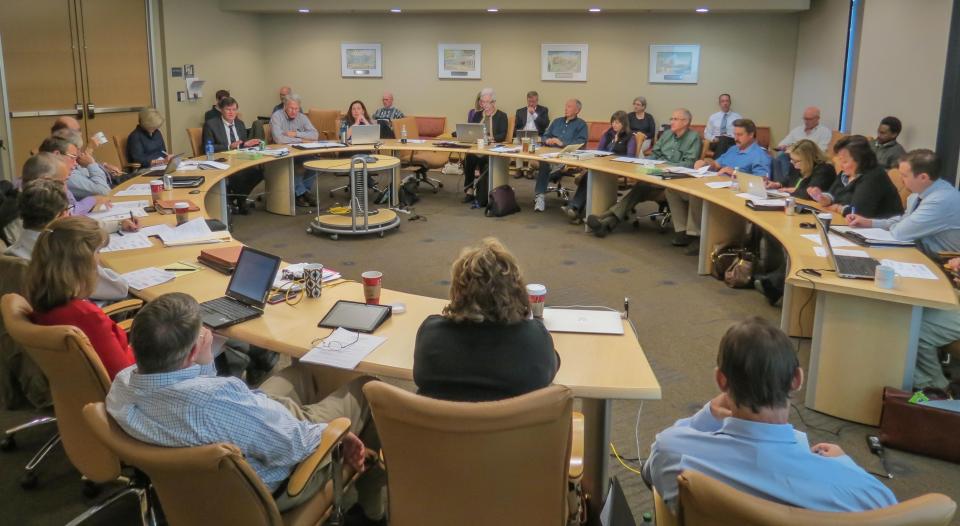 Now that the program has passed
through the Central Valley regional water board, Gleason, the
Sacramento attorney, believes it is imperative for those affected
by its provisions to take notice.
Now that the program has passed
through the Central Valley regional water board, Gleason, the
Sacramento attorney, believes it is imperative for those affected
by its provisions to take notice.
“Even though they tried their best to bring in agencies and to bring in the other dischargers, it’s still going to catch people by surprise,” she said. “I think everybody that is subject to CV-SALTS should anticipate that once they start on a path of providing replacement water, that they are never stopping. It’s going to be a very long time before the science catches up to this problem.”
Chilcott with the regional board said her agency had the option of pursuing its legal authority with cleanup and abatement orders for salt and nitrate, but that going that route would have been a “recipe for litigation.” Instead, the decision was made to facilitate local solutions that protect users, control contamination and then work on restoration.
Cozad acknowledged that the program puts a burden on people, but said that it also provides the opportunity for creative, local solutions to the discharge dilemma.
“That’s a lot different than just saying ‘You’ve got to comply with this and pay this much or do these things,’” he said. “When you do risk assessment, it’s the risk you can control versus the risk you can’t control, and if you can control it, you are willing to take a much bigger risk.”
Know someone else who wants to stay connected with water in the West? Encourage them to sign up for Western Water, and follow us on Facebook and Twitter.









